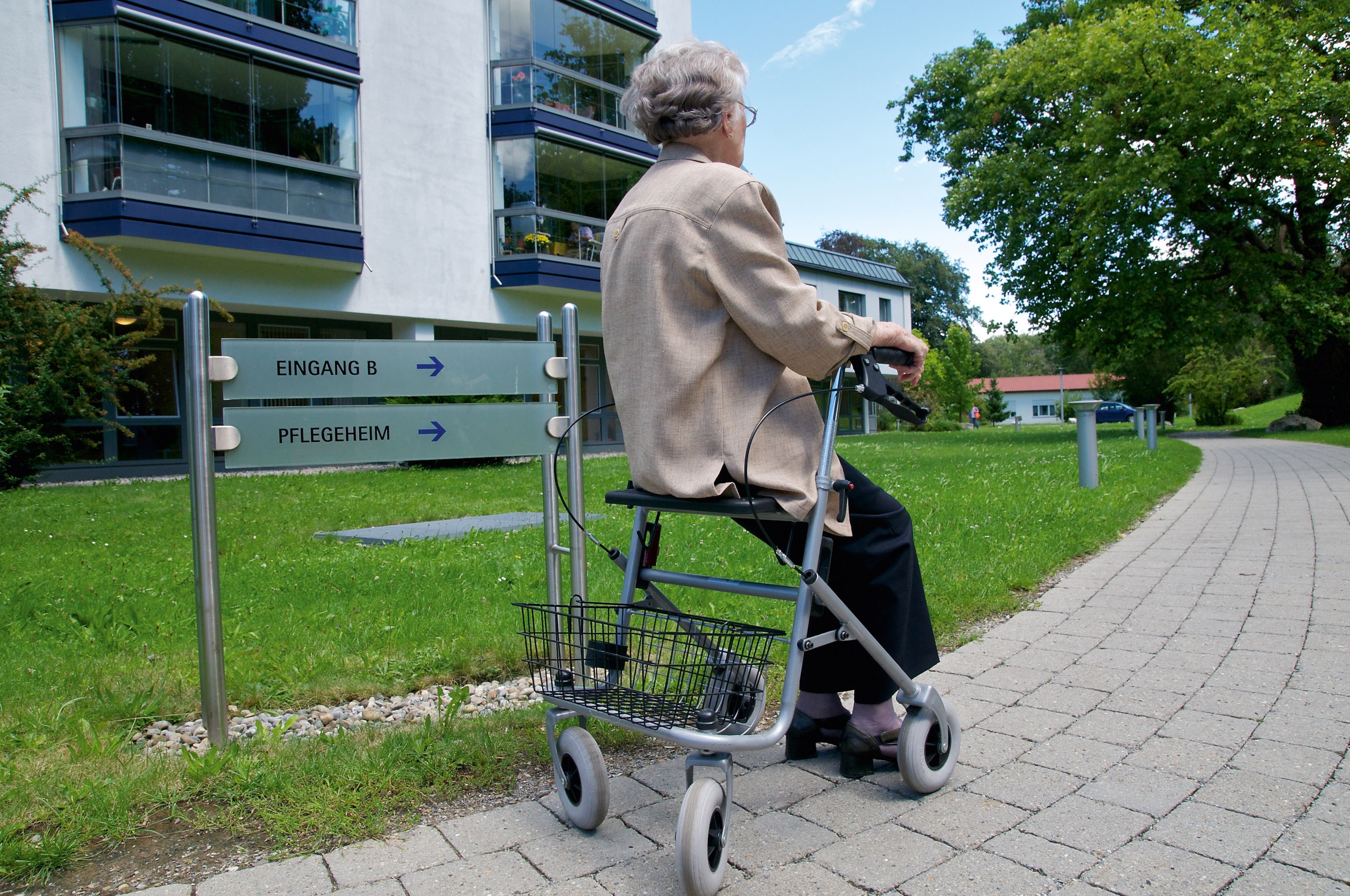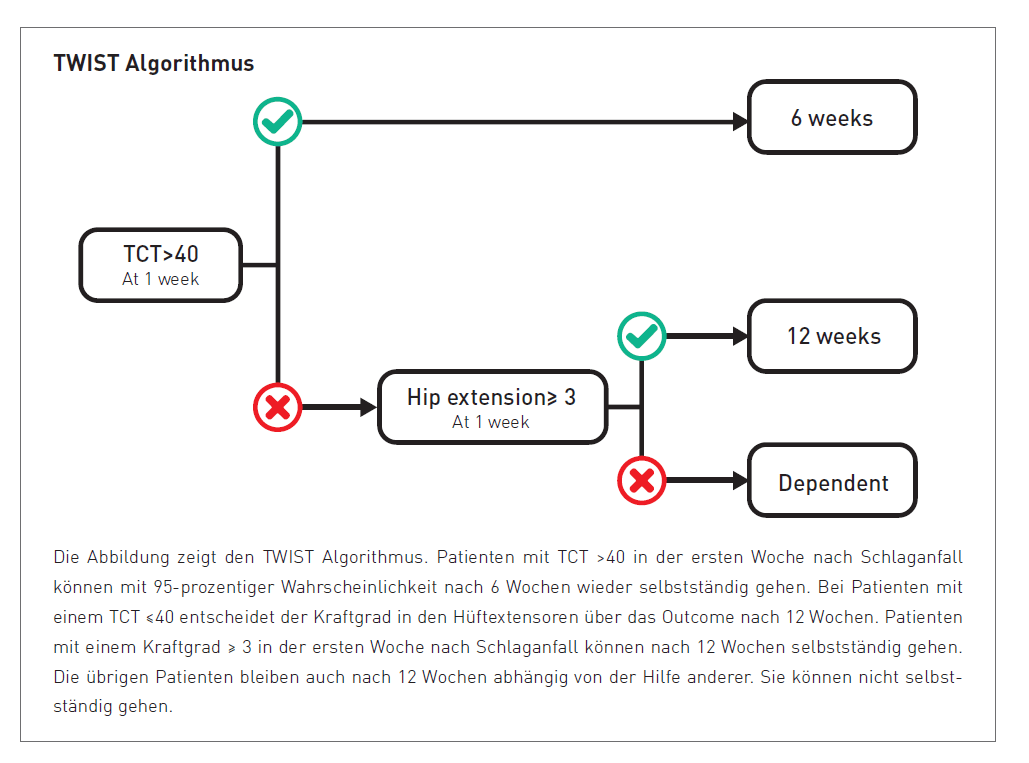
The TWIST algorithm enables accurate prediction of post-stroke walking ability within one week. Based on simple bedside motor tests, it helps clinicians and patients plan realistic rehab goals and timelines.

The probability of being able to walk independently again after stroke is vitally important for patients and their relatives. The ability to move independently determines the degree of autonomy in everyday life after rehabilitation and associated with this the necessary steps in planning a patient’s discharge from hospital.
A study published last November by Marie-Claire Smith and colleagues in Neurorehabilitation and Neural Repair investigated possible factors to predict independent walking ability after stroke.
Using an algorithm derived from the study results to predict walking ability, the authors made a significant contribution to planning rehabilitation measures. The possibility of predicting whether and when a patient will be able to walk independently again after stroke helps patients and their relatives to develop realistic expectations regarding the level and duration of possible functional recovery. The prediction supports doctors and therapists in planning multi-disciplinary goals and in anticipating possible consequences for post-inpatient care.
The study recruited stroke patients unable to walk independently with lower limb weakness (<100 on the Motricity Index Score for the lower limb) within the first three days after an acute stroke event. The researchers used the Functional Ambulation Categories (FAC) to determine walking ability. An FAC score ≥4 was deemed an indicator for independent walking ability. In addition to the FAC, the Trunk Control Test (TCT) was also carried out. The Trunk Control Test is a quick and easy procedure for capturing trunk control in patients with pronounced neurological diseases. The test result can be used in the early phase after stroke to predict how well a patient will recover motor skills and how likely it is that they will be able to walk again. In addition, muscle strength for hip flexion, hip extension, hip abduction, knee flexion and knee extension, as well as dorsal extension and plantar flexion, was determined using the Medical Research Council (MRC) muscle scale. All assessments were collected within the first week after the acute event.

Using a CART analysis (Classification of Regression Tree), the factors (based on the measurement results obtained) were identified with which it is possible to predict whether a patient will achieve independent walking ability within the first 6 to 12 weeks or will continue to need assistance.
Mit Hilfe einer CART-Analyse (Classification of Regression Tree) wurden auf Grundlage der gewonnenen Messergebnisse die Faktoren identifiziert, mit denen vorhergesagt werden kann, ob ein Patient innerhalb der ersten 6 bis 12 Wochen die unabhängige Gehfähigkeit erreicht bzw. auch danach weiter auf Hilfe angewiesen ist.
A total of 41 patients were recruited and included in the study during the evaluation period. 24 of the 41 patients were female. The average age was 72 years (43 to 96 years). The CART analysis enabled the researchers to develop the “Time to Walking Independently after Stroke (TWIST) algorithm”, which, according to the authors, can predict with 95% accuracy the walking ability of stroke patients.
Patients with a TCT score >40 in the first week after stroke are highly likely to be able to walk independently again 6 weeks after the acute event. Patients with a TCT score ≤40 are expected to be able to walk independently after 12 weeks if they have a muscle strength ≥3 in the hip extensions. In contrast, patients with an MRC score <3 in the hip extensions will continue to need assistance with walking after 12 weeks.
The results from the neurophysiological measurements and imaging procedures did not provide any useable results for a more differentiated prediction.
In this exploratory study, the TWIST algorithm was used to predict whether and when stroke patients will achieve independent walking ability. It included the use of simple assessments, which were carried out within the first week after stroke at the patient’s bed. According to the authors, more large-scale research will be necessary in the future to develop and validate the algorithm.
In her study, Marie-Claire Smith and her colleagues tested predictors for the recovery of walking ability after stroke and concluded that a fairly accurate prediction based on easy-to-perform assessments (TCT and determining MRC hip extension scores) is possible. The tests can be carried out within the first week at the patient’s bed. The TWIST algorithm derived from the study results can support clinical decision making and predict expected functional recovery.

- Smith, Marie-Claire (BHSc), BarberP. Alan, (Phd), Stinear,Cathy M. (PhD). The TWIST Algorithm Predicts Time to Walking Independently After Stroke. 2017 Vol 31, Issue 10-11, pp. 955 - 964.
Related contents
Find related exciting contents in our media library.
Meet our specialists.
Are you interested in our solutions? Schedule a meeting with a Consultant to talk through your strategy and understand how TEHRA-Trainer can help you to advance rehabilitation.
You need to load content from reCAPTCHA to submit the form. Please note that doing so will share data with third-party providers.
More InformationYou are currently viewing a placeholder content from Turnstile. To access the actual content, click the button below. Please note that doing so will share data with third-party providers.
More Information